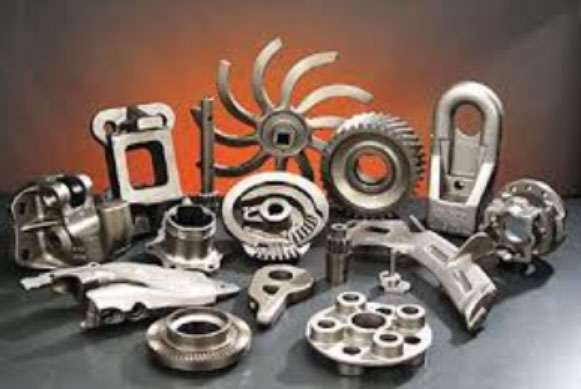Ductile iron casting is a widely used casting method in industrial manufacturing, known for its versatility and strength. The process of ductile iron casting involves several stages that transform molten metal into a solid component with desired properties. In this article, we will explore the process of ductile iron casting, from the initial molten metal stage to the final solid component.

- Pattern Making: The process begins with the creation of a pattern, which is a replica of the desired component. The pattern is typically made from wood, plastic, or metal and is used to create the mold cavity.
- Mold Preparation: A mold is created by packing a mixture of sand and binders around the pattern. This mixture, known as molding sand, provides the shape and form of the final casting. The mold is typically made in two halves, known as the cope and drag, which are joined together to create the complete mold cavity.
- Pattern Removal: Once the mold is prepared, the pattern is removed, leaving behind a cavity that matches the shape of the desired component.
- Molten Metal Preparation: Ductile iron is made by melting iron along with small quantities of alloying elements such as magnesium, cerium, or other rare earth metals. These alloying elements facilitate the formation of graphite in the iron, giving it ductility and strength.
- Pouring and Filling: The prepared mold is placed in a casting machine, and the molten metal is poured into the mold cavity. The metal fills the cavity and takes the shape of the component.
- Solidification: As the molten metal cools, it solidifies and takes on the shape of the mold. The solidification process is carefully controlled to ensure the desired properties and avoid defects like shrinkage or porosity.
- Cooling and Shakeout: After solidification, the casting is left to cool in the mold. Once cooled, the mold is opened, and the casting, still attached to the sprue and runner system, is removed. The sprue and runner system are then removed through a process called shakeout.
- Finishing Operations: The casting undergoes various finishing operations, such as cleaning, grinding, and machining, to remove any excess material, smooth surfaces, and achieve the desired dimensional accuracy.
- Inspection and Quality Control: The final ductile iron casting is inspected for dimensional accuracy, surface quality, and mechanical properties. Non-destructive testing methods, such as X-ray or ultrasonic inspection, may be used to ensure the integrity of the casting.
- Heat Treatment: Depending on the specific requirements, the ductile iron casting may undergo heat treatment processes, such as annealing or quenching and tempering, to further enhance its mechanical properties and hardness.
- Final Product: After completing all the necessary steps, the ductile iron casting is ready to be used as a solid component in various applications, such as automotive parts, machinery components, pipes, or structural elements.
In conclusion, the process of ductile iron casting involves several stages, starting from pattern making and mold preparation to the pouring of molten metal and the final finishing of the casting. This process allows for the production of strong and versatile components used across various industries. With careful control and quality assurance measures, ductile iron casting delivers reliable and durable components that meet specific design requirements.
